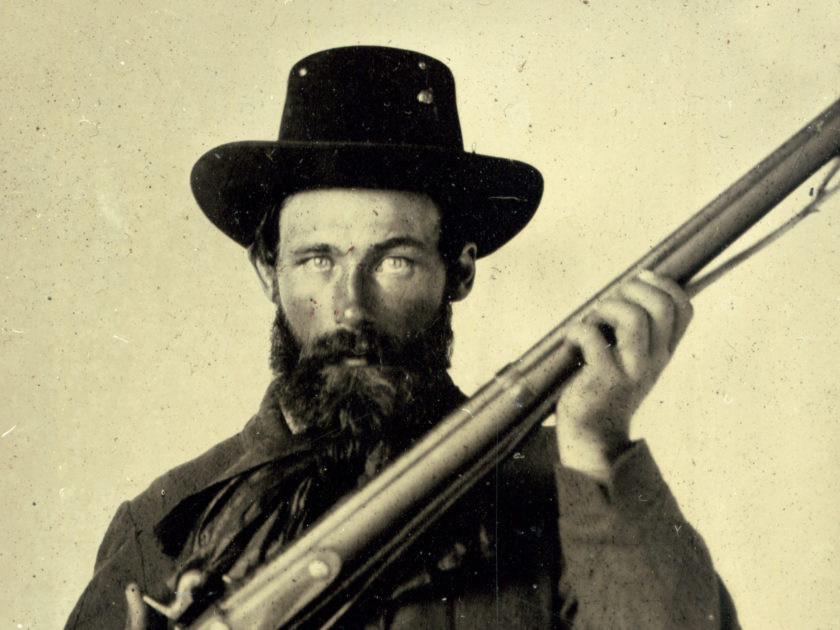Kevin Canberg’s journey as a collector began with an unusual Father’s Day gift for his dad—a vintage fireman’s badge from Brooklyn, N.Y. It was perfect for his father, a Brooklyn firefighter among the first responders after 9/11.
Canberg traced a number on the back of the badge, 1170, to a ledger in the Brooklyn Historical Society. He discovered that it had been issued in 1858 to a Duncan Richmond.
Richmond had never returned it.
 After the war began, Richmond enlisted as a private in the 11th New York Infantry, also known as the Fire Zouaves. He later became a captain in the 159th New York Infantry. He carried the badge with him until operations against Port Hudson, La., in 1864, where it was lost, and recovered long afterwards. Richmond died before the end of the year from a mortal wound suffered at Cedar Creek, Va.
After the war began, Richmond enlisted as a private in the 11th New York Infantry, also known as the Fire Zouaves. He later became a captain in the 159th New York Infantry. He carried the badge with him until operations against Port Hudson, La., in 1864, where it was lost, and recovered long afterwards. Richmond died before the end of the year from a mortal wound suffered at Cedar Creek, Va.
The story illustrates Canberg’s relentless pursuit of research to place artifacts in context to history. “I believe we are caretakers, and we are entrusted with the care of something sacred and important,” he observes. “We are attempting to build an understanding of an era that came to define our country, and I think we are only scratching the surface of what we can achieve.”
Ken Burns’ epic 1990 documentary The Civil War prompted Canberg’s first interest in the subject. “I was captivated (and so was my father), particularly by the soldier photos: a lot of these soldiers looked just like me,” he noted. A trip to Gettysburg soon afterwards completely piqued his passion.
Time passed and his interest grew. Then came the fireman’s badge and other relics. About 10 years ago, Canberg turned to images and has never looked back.
“There’s something about a soldier photograph that helps bring the Civil War narrative from the neat and academic to the raw, complicated, and inspiring,” he observes. “‘Every picture tells a story,’ goes the Rod Stewart song (one of my favorites, despite growing up in the punk rock scene). To me, the best images either tell or imply a story.”
Canberg began building his collection through eBay and other online sites. The first purchase he remembers introduced him to one of his mentors, MI Contributing Editor Rich Jahn, who by coincidence, lived only a half-hour away. The two formed a lasting friendship and have met almost monthly ever since.
Another friend is MI Senior Editor Dan Schwab.
“One thing I really admire about Dan is that he loves to talk,” says Canberg. “Actual phone calls, not just texts. Dan would call and our home phone would announce, ‘Call from … Schwab, Daniel.’ I would always say aloud, ‘I’ve got to pick up, Dan Schwab is calling!’ Somehow my daughter, Darcy, associated that name with actual cased images, probably because when he called I went into my office and started playing with images. (She was about 2 when this happened.) One day I came home from work and she told me a ‘Dan Schwab’ came in the mail. I showed her a cased image and asked her what it was, and she said, ‘A Dan Schwab.’ It’s hysterical, and I never corrected it. She’s old enough to know the difference now, but we still share the inside joke.”
Canberg has learned a lot over the last decade. “There’s always another great image,” he notes. “That’s true. Getting stuck on regrets or mistakes just leads to more regrets and mistakes. Buy what you like and don’t hold on too tightly.”
And Canberg will not likely slow down anytime soon. His enthusiasm is infectious and energy boundless, as evidenced by the images here.
Moreover, Duncan Richmond remains a key motivator.
“In the time since I put a name to his badge, Richmond has become a sort of unrelated relative and inspiration for me. He seemed to be courageous to the core. I’ve exhausted my research, but still have not located his photo. It’s my white whale!”
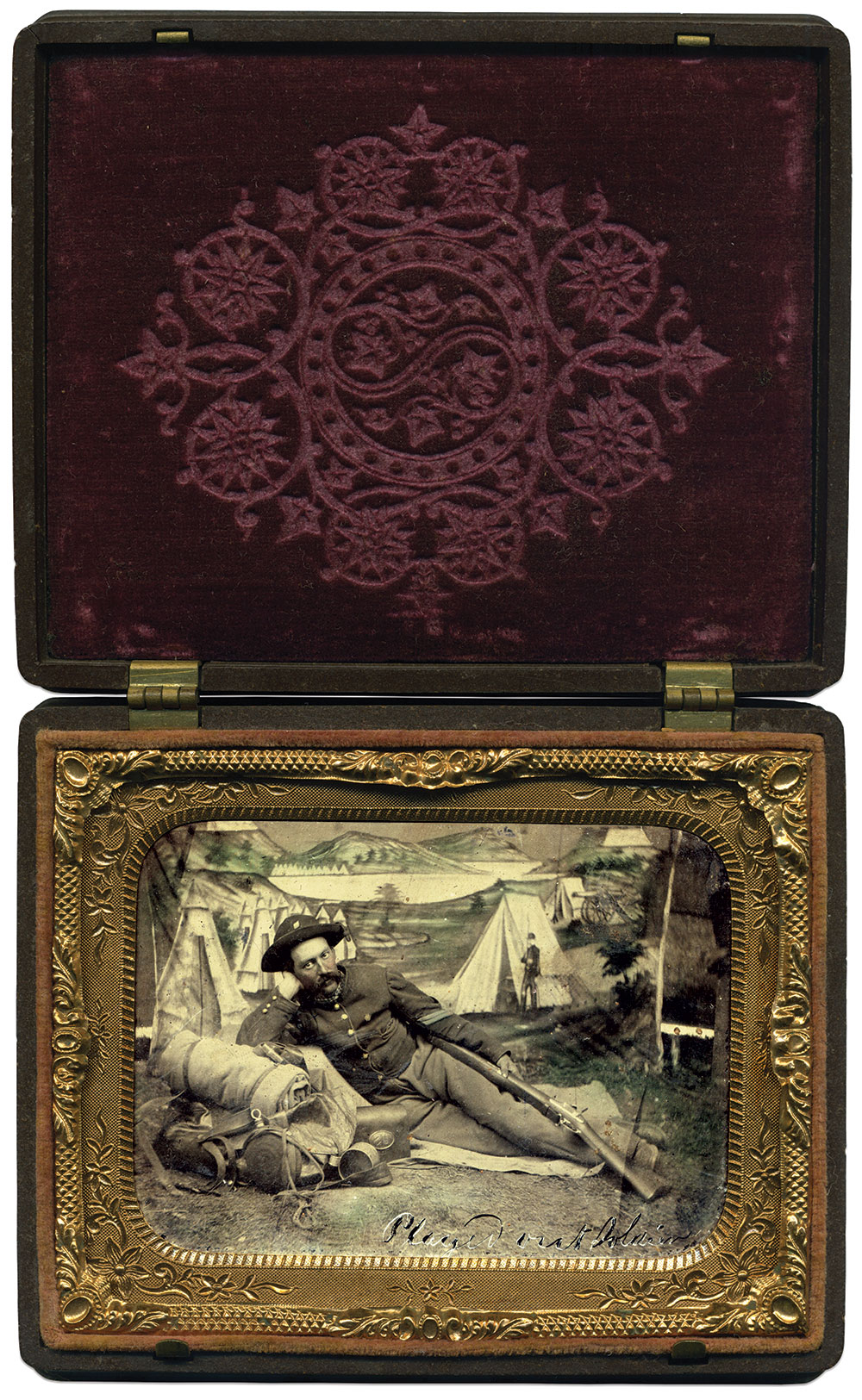
One of Gen. Daniel E. Sickles’ corporals, likely from a New York infantry regiment, captured the spirit of his image with a simple inscription in the emulsion, “Played Out Soldier”—period slang for exhausted. And this soldier looks the part. With a shoulder propped on his bedroll and head in hand, he rests next to his worn equipment. It is not known whether or not this soldier felt played out before or after Sickles’ near-disaster at Gettysburg, where the Third Corps was chewed up around Sherfy’s Peach Orchard. The location of this photo is also unknown, but the dirt floor suggests it was taken in the field: The backdrop shows a military camp within a forest clearing, and is stretched between two large sticks.
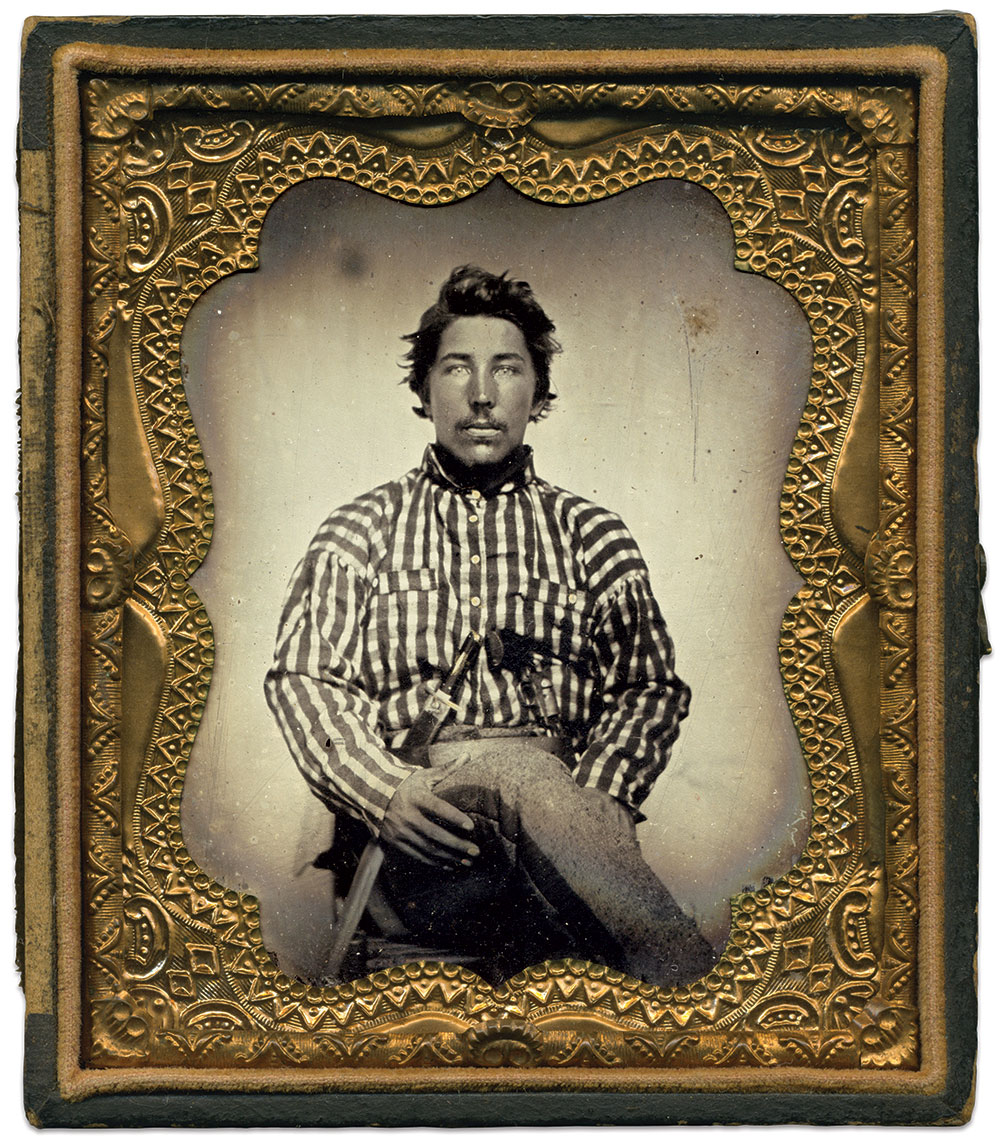
Thomas W. Rimes was 16 or 17 when he enlisted in the Confederate Army. Resplendent in his bold gingham battle shirt and uniform trousers with wide stripe, he is armed with a revolver, a large fighting knife and second even larger bowie knife (visible near his leg). Rimes and his brothers served in Company D of the 6th Arkansas Infantry and fought at Shiloh and Corinth, Miss., in 1862. This bloodshed was apparently enough for young Rimes and his commanding officers. He was listed as absent on furlough from late 1862 onward, ostensibly sent home because of his minor age. Rimes moved to Texas after the war, where he became a printer for the Dallas News.

This Union soldier captures the essence of the campaigner: dirty and worn, and yet, seemingly content. The subject sits on a felled log, boots in the dirt, while he lifts what appears to be a Cincinnati Depot canteen for a well-earned drink. The unusually thick fabric of his sack coat is of particular note. Referred to as a knit blouse, about 500,000 of these garments were made during the war and saw scattered use. They are often associated with Pennsylvania soldiers, including the emergency militia activated immediately before Gettysburg.

Samuel L. Leffler led a charmed life. When the Civil War began, he signed up to fight with the 25th Missouri Infantry. He was wounded at Shiloh and Corinth, Miss., and later tangled with Quantrill’s guerillas along the Kansas-Missouri border. After his regiment converted to the 1st Missouri Engineers, Leffler assembled pontoon bridges for Maj. Gen. William T. Sherman on his march through Georgia. Once hostilities ended, he packed his family in a covered wagon and rode the Oregon Trail to a town called Heppner, near the Canadian border, where he established a farm. He died there in 1901, leaving behind two children with March to the Sea-inspired names: William Sherman and Marietta. This image was discovered in Heppner nearly 150 years later. The identity of the hound is unknown.

John Egler, identified by the name and regiment stenciled boldly on his backpack, lived with his wife and six children on a farm in what is now Leelanau County, Mich. Despite over age 40, Egler, a German immigrant, signed up to fight with the 26th Michigan Infantry at the outbreak of war. At some point, perhaps early in his service, he stopped and had his picture made. An artistic shot, Egler holds an apple in one hand and a bayonet in the other. The fruit may have been more than just a flourish: Egler’s farm produced apples and apple trees on the Traverse City peninsula. Unfortunately, Pvt. Egler did not return to Michigan. He was mortally wounded at Spotsylvania, Va., and died a few weeks later in a hospital in Washington, D.C. He is buried at the U.S. Soldier’s and Airmen’s Home National Cemetery in Washington, along Rock Creek.

This youngster, who appears no older than 13, fits the romantic ideal of the drummer boy. He brandishes a sword in one hand and a regulation regimental eagle drum upon his knee. The pistol in his belt suggests toughness beyond his years. A clue to his identity are the old English letters NY on his belt plate, associating him with the Empire State. The careful tinting on the drum is noteworthy.

The unique grey uniform worn by this soldier places him in an early-war Illinois regiment. Posed ramrod-straight in a photographer’s studio, he displays some of an infantryman’s tools: Musket, fighting knife, and state-issued drum canteen. A closer inspection of his sleeves reveals freshly applied corporal’s chevrons that look haphazardly hand-sewn.

The 13th Kansas Infantry occupied Fort Smith, Ark., on the western frontier. This image, taken on Nov. 12, 1864, according to the inscription, depicts armed soldiers and their regimental colors turned out for review on Garrison Avenue. The enterprising photographer appears to have made the image from the second floor of a commercial building, perhaps a gun shop based on the unusual crossed carbines seen in the lower left. Of note is the white horse on the covered porch.

A soldier-father holds his son tightly, his worn hand around the boy’s shoulder. The older man’s weathered face, perhaps the result of years of outdoor work or recent campaigning, stands in stark contrast to his son. The child wears a U.S.-issued forage cap and cap box on his belt.
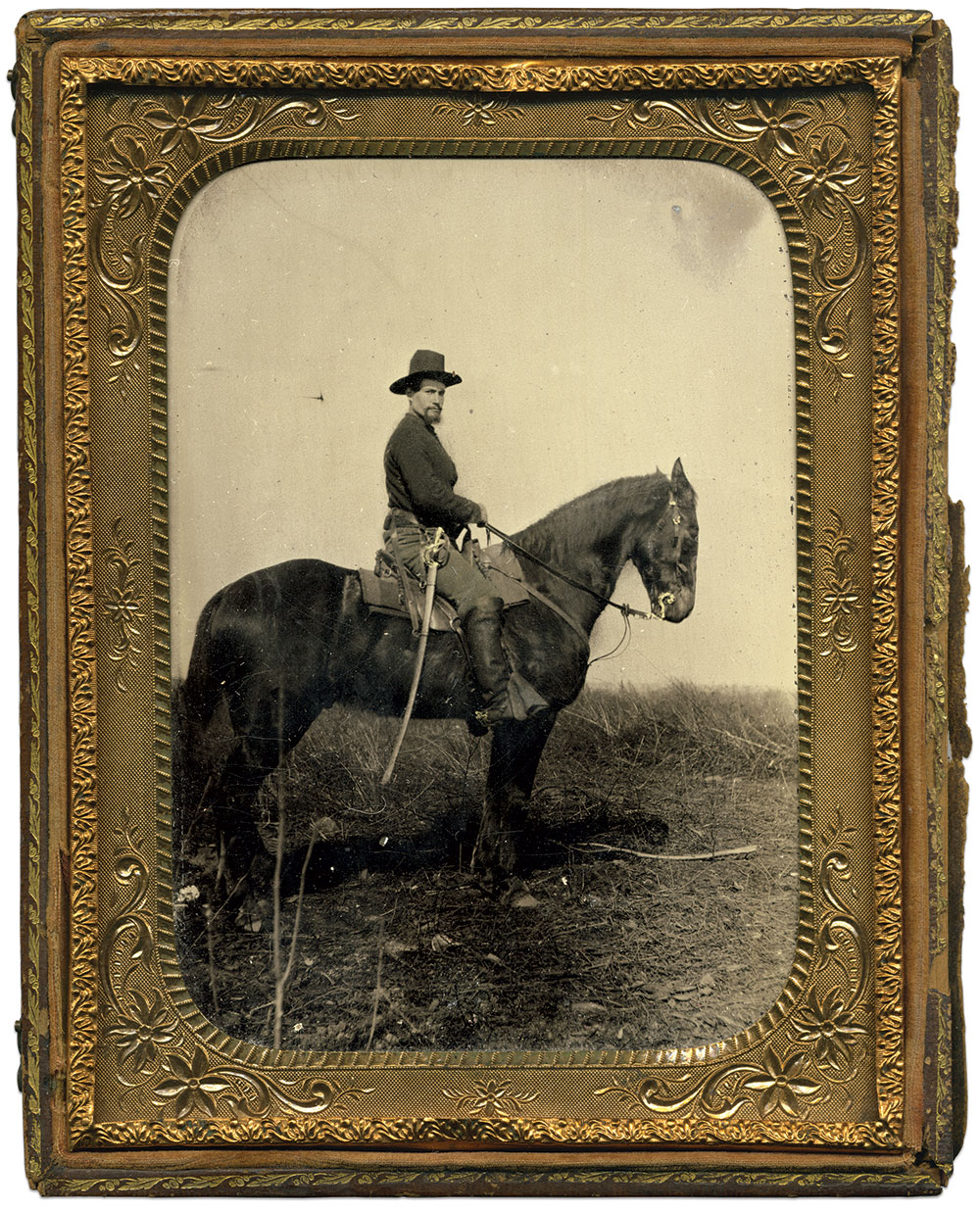
This Union cavalryman and his jet-black stallion remained perfectly still for the duration of the artist’s exposure—not an easy feat for a human riding an 800-pound animal. Visible are his issue sword and a blanket, folded neatly under the saddle to provide a small comfort to both horse and rider. The landscape, bare but for tall grass, lends an eerie tone to the photograph, as if the pair materialized from the fog.
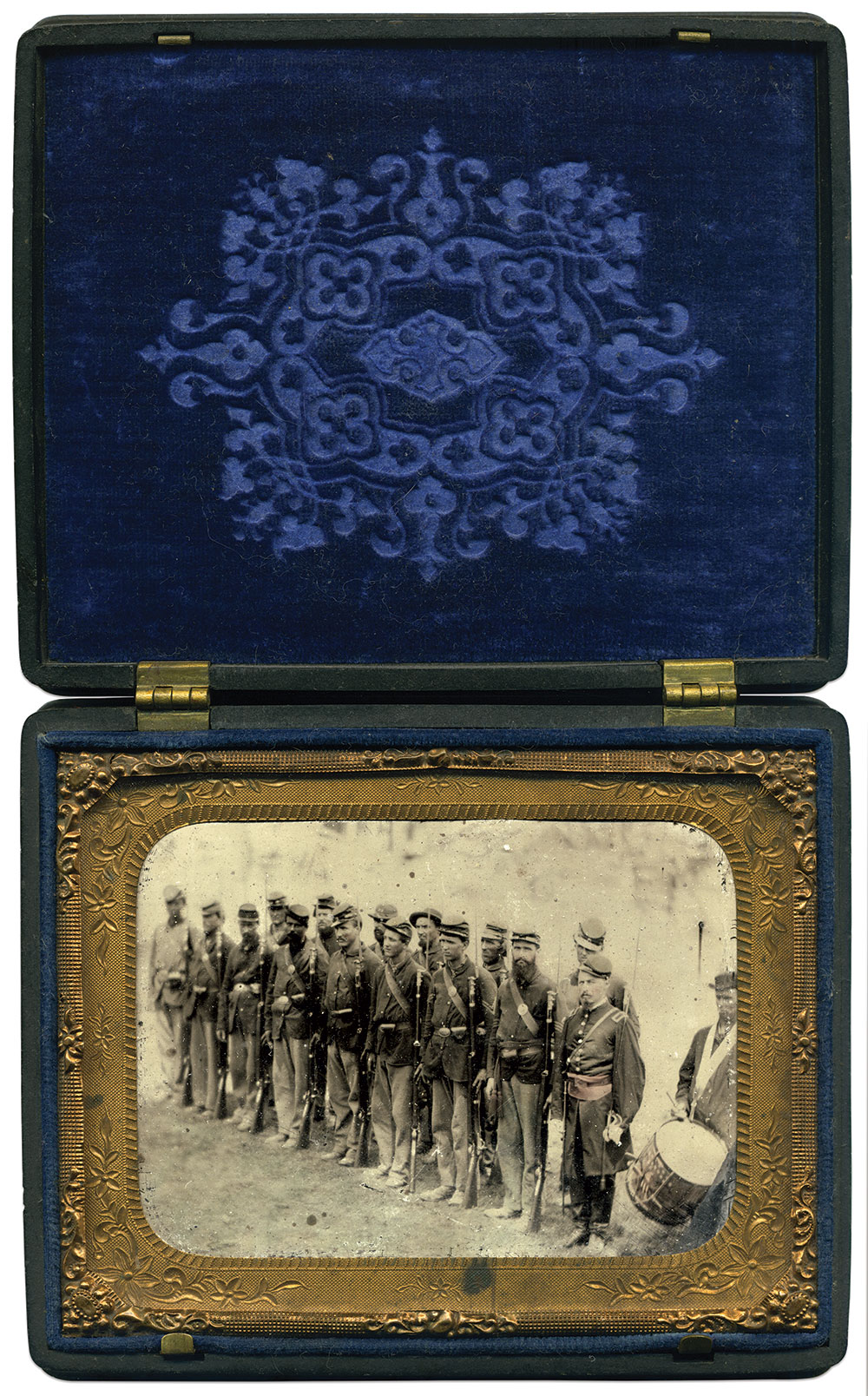
These 16 Union soldiers reveal differences in accouterments and personal appearance. Young and old men stand in line, some staring ahead, while others peer at the camera. The drummer prepares to beat the march. Their individualism serves as a powerful reminder that most of the men who comprised the Civil War armies were citizen volunteers.
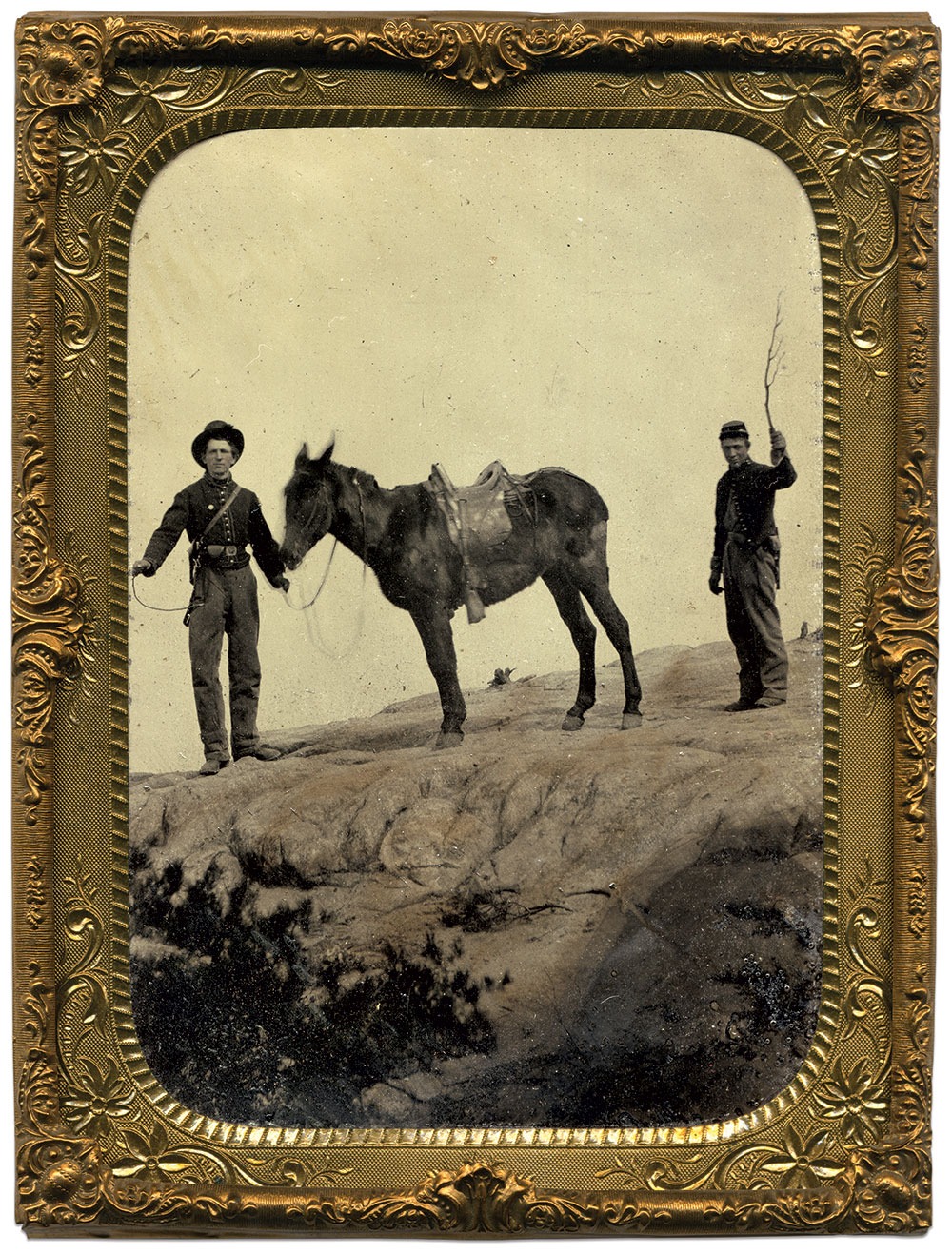
At a reunion of the 15th Pennsylvania Cavalry in 1922, Daniel Fisher held this image aloft as he told a rollicking story about the advantages of mules versus horses for the mounted soldier. “This mule was on the grass at Chattanooga,” he began. “The rebel guns were sending those little golf balls, and this mule kept one eye looking back … and he kicked a shell on Lookout Mountain into the gun [and] killed every man in the battery.” Pausing for waves of laughter, he doubled down. “I am here to back that mule.”
Fisher, a born storyteller and soldier, lived in Oil City, Pa., after his war service. His tall tales captivated a young neighbor named Bill Gavin, who received this image from an aging Fisher. Gavin went on to become one of the earliest and most influential collectors of the American Civil War. Fisher lived to be 102, and served as both mayor and fire chief of Oil City.
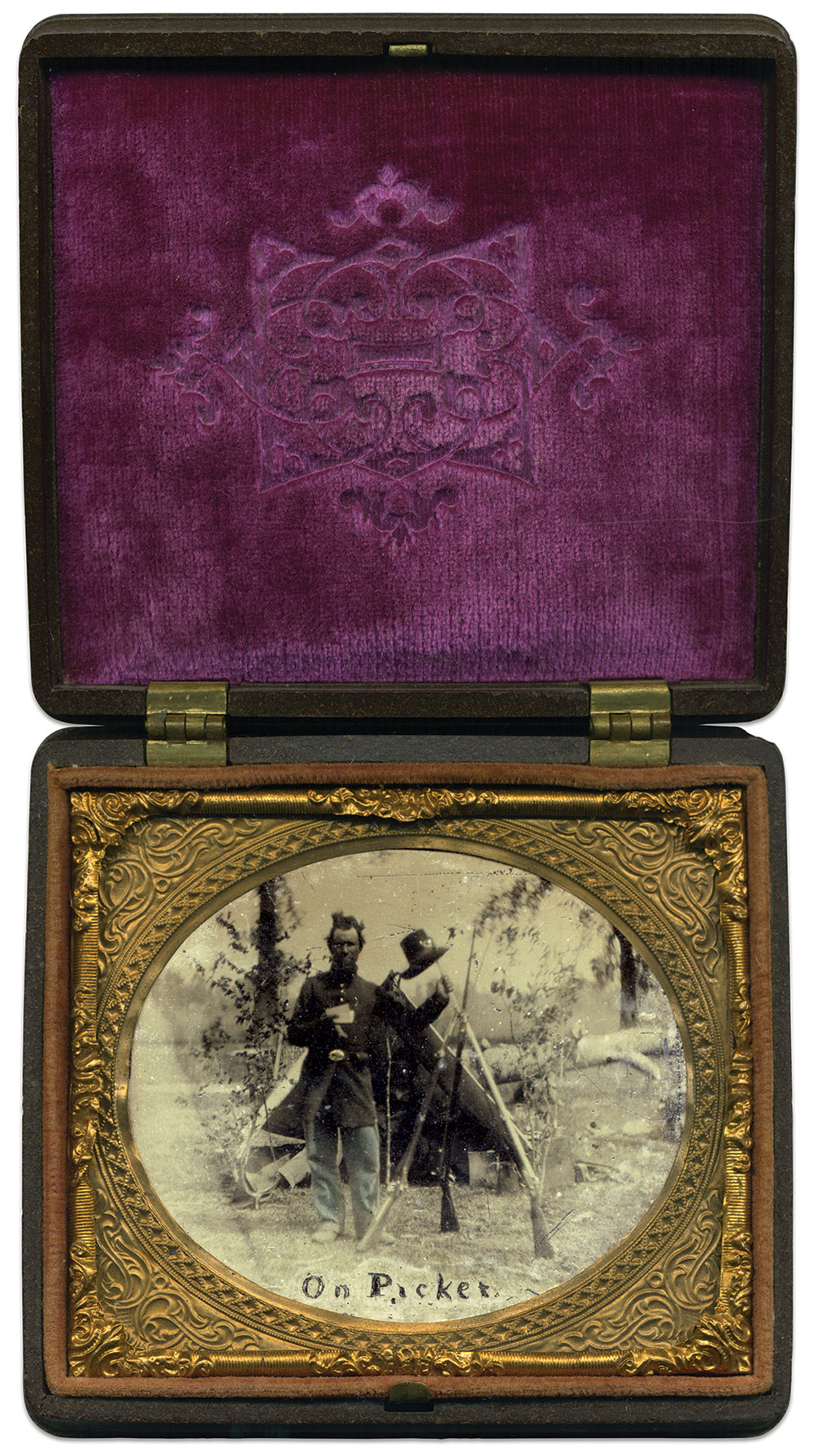
Inscribed “On Picket,” two Union pards demonstrate life in the field. Their tent is filled with and surrounded by the minutiae of camp. One soldier reclines beneath the flaps. The standing soldier holds a pencil, paper and envelope. One wonders if that pencil was used to scratch the inscription into the emulsion, and whether this image was eventually mailed to a loved one in that envelope.
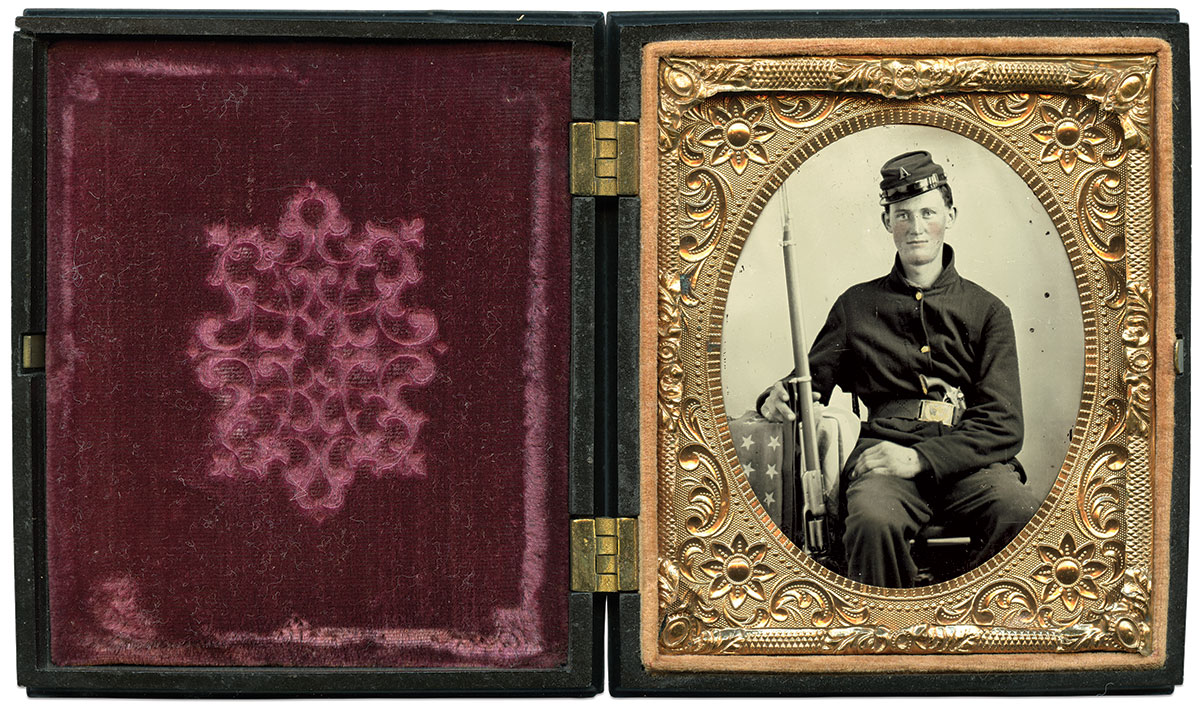
This baby-faced Union soldier, from Company A of an unknown infantry regiment, grips a Colt Model 1855 Revolving Rifle, with an attached leather sling. Like many soldiers who perhaps wanted to appear more impressive or patriotic for their wartime likeness, he tucked a revolver into his belt. Colt’s unique rifle received mixed reviews from the men who used it in action, although some Illinois and Ohio units fired them with great effect at battles like Pea Ridge and Chickamauga. They are rarely seen in Civil War photography.
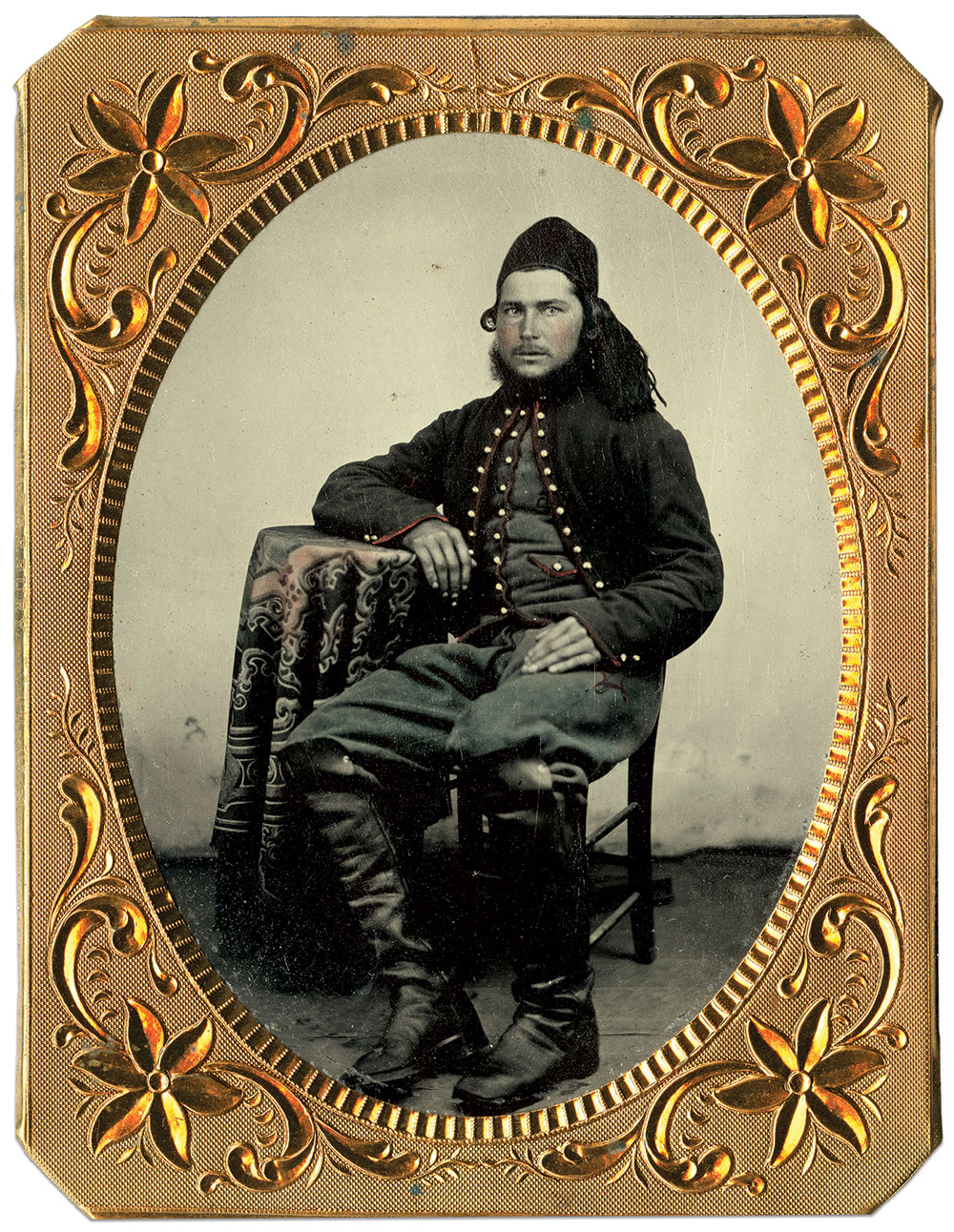
This bearded soldier wears the uniform of a Pennsylvania Zouave infantry regiment, likely the 95th (Gosline’s Zouaves) or 72nd (Baxter’s Fire Zouaves). The artist skillfully highlighted the red details of the unique jacket and vest, and added a lighter-blue tint to both vest and baggy trousers to differentiate the bright color from that of the darker jacket. Rather than gaiters, this soldier opted for black leather knee-flap boots. He completed the look with a fez. With such splendid uniforms, it is easy to understand why Zouave regiments were attractive to prospective soldiers.
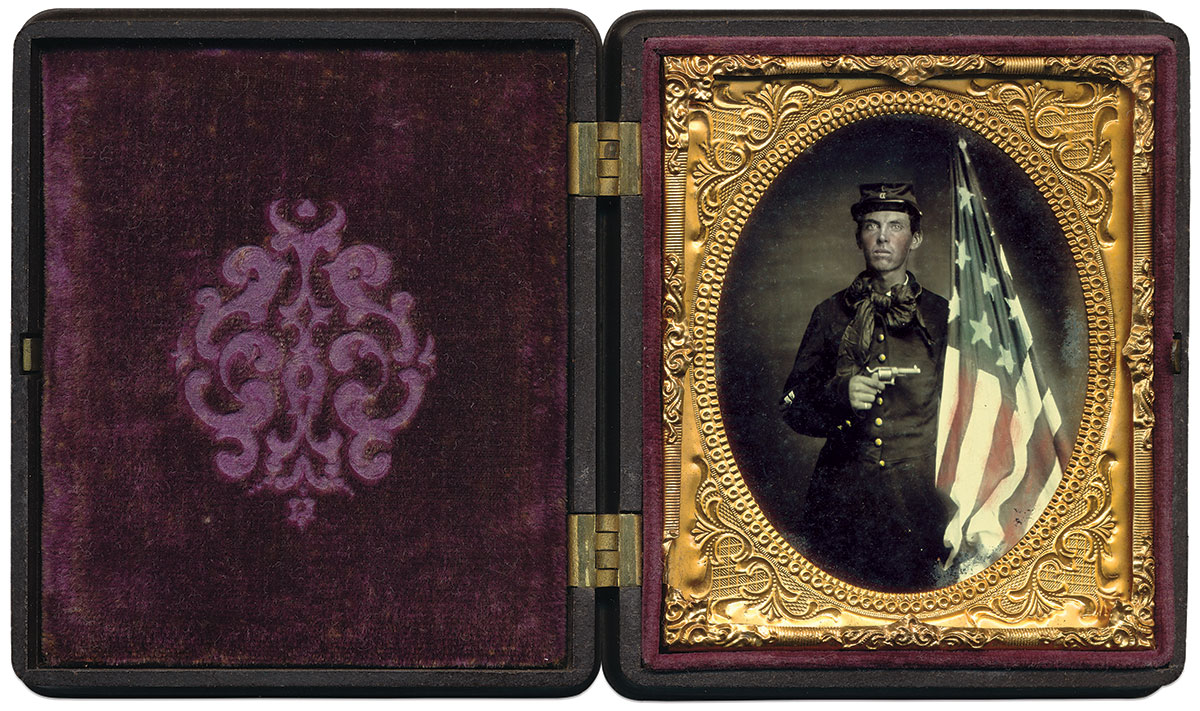
With the American flag clutched to his side and a pistol held against his breast, this federal corporal captures the patriotic fervor that motivated his transition from citizen to soldier. A clue to this soldier’s identity is his hat brass, which indicates his allegiance to Company D of a Northern state’s 1st regiment of infantry.
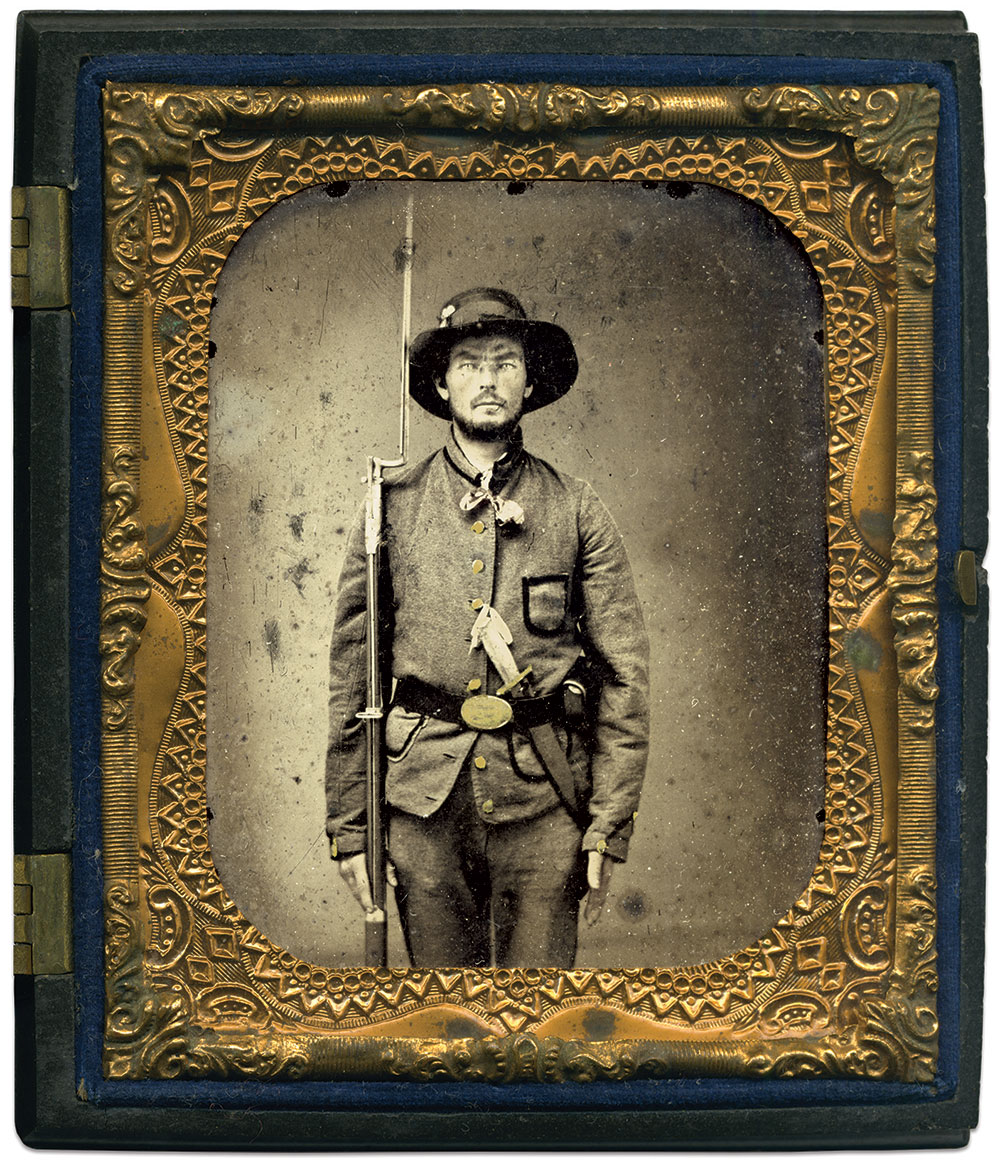
This Confederate has ribbons or pieces or patterned cloth tied through the button holes of his jacket. A cockade on his hat and Alabama Volunteer Corps (AVC) brass buckle completes the look. His image surfaced more than 150 years after his service at a flea market in Hollywood, Calif., remarkably undamaged despite the lack of a case.

On Jan. 28, 1862, 24-year-old John H. Pintler of the 1st New York Mounted Rifles entered a Baltimore photographer’s studio. Soon after his new image dried, he scratched his name and the particulars into the emulsion. Dressed in the distinct uniform of the Empire State’s Tenth Legion, Pintler was among the men of Company C attached to the 56th New York Infantry, ostensibly to form a battalion. He spent most of his time skirmishing with rebel cavalry along Virginia’s Atlantic coast. Sgt. Pintler was mortally wounded at one such skirmish at Joyner’s Ford, and died five days later on Dec. 17, 1862. He left behind a wife, Caroline, and two young sons.
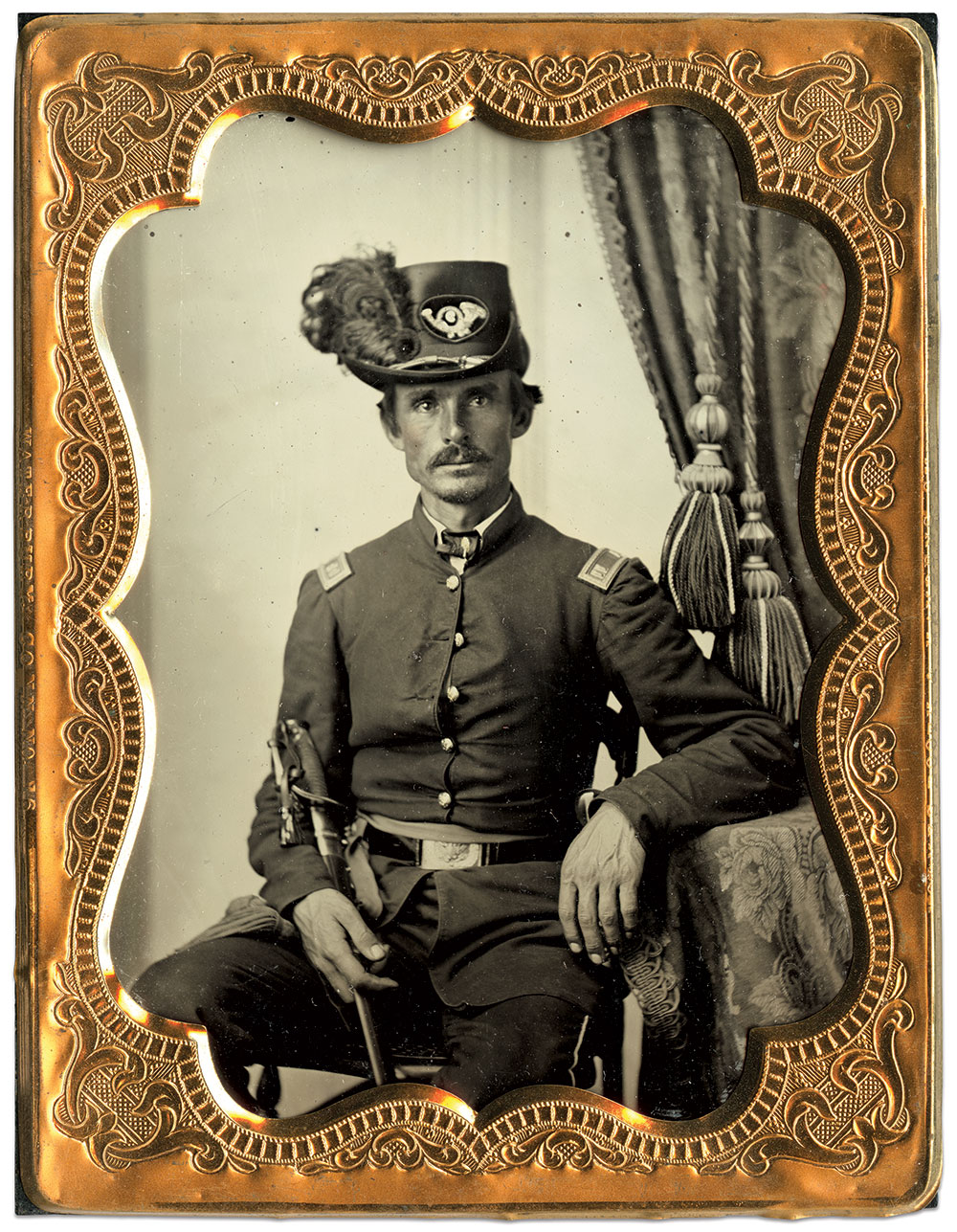
This portrait of well-heeled captain from an unknown 9th regiment of infantry surfaced just northeast of Cincinnati, Ohio, and may have a connection to that city. Of note is his extraordinarily fine Hardee hat, fitted with a large black ostrich plume, and his patent-leather belt rig, outfitted with officer’s sword and holstered revolver.
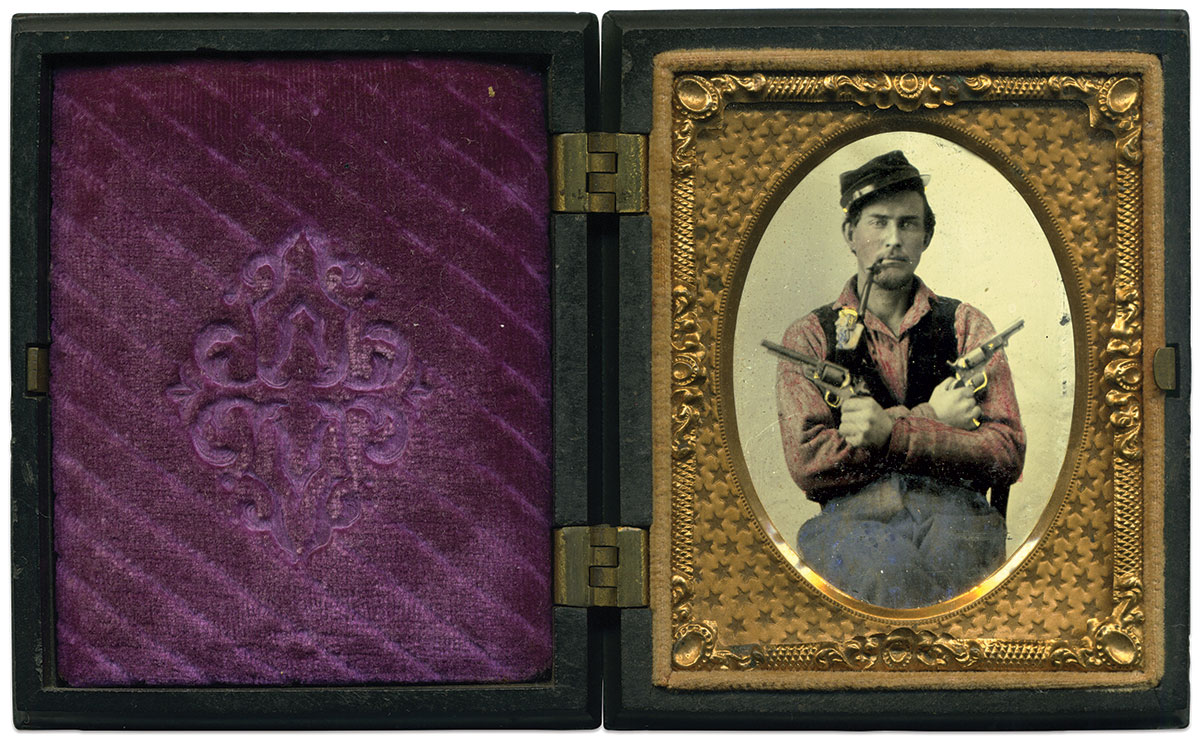
With cap cocked to the side, fists gripping a pair of revolvers, and a jaw clamped down on the lip of a packed effigy pipe, this jaunty federal projects a measure of invincibility. His red-tinted shirt adds depth to the image. His fate is unknown.
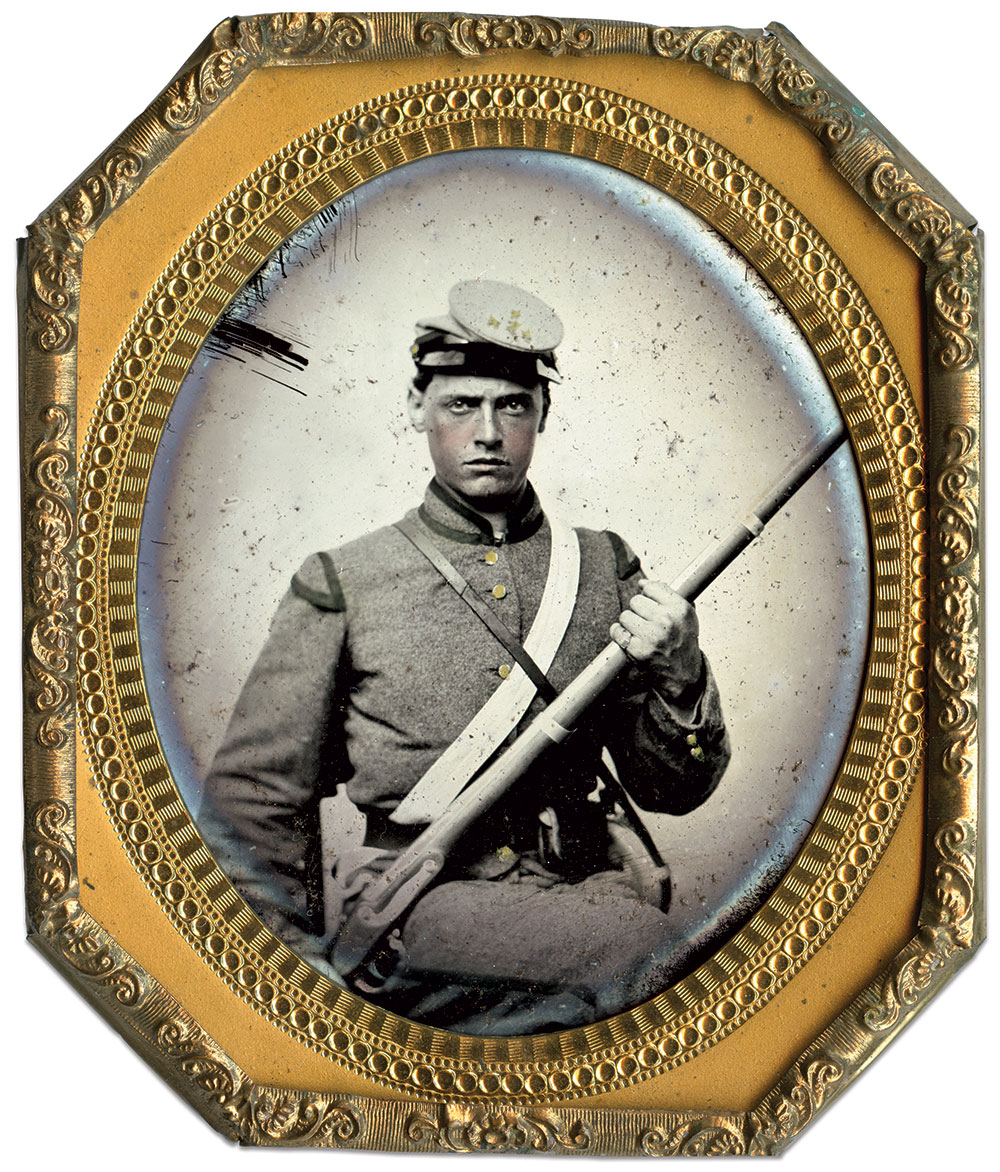
Clad in a gray jacket with black-trimmed collar, cuffs and imitation puff wings on his shoulders, this young Confederate infantryman, right, likely had his portrait made early in the war. His hands grip the musket held diagonally across his body. Of additional note are his white fabric haversack and unusual canteen. Brass letters on the crown of his cap suggest allegiance to a single-numeral infantry unit from Virginia with the company nickname initials SR.

A Yankee artilleryman in a sky-blue greatcoat, below, watches two cannoneers re-enact in a wild brawl. Simulated violence to this degree is unusual in Civil War images. The doomed soldier holds his short sword across his face in an effort to parry the blow, as his free hand grips his opponent’s shell jacket. It is unclear what the young soldier in the back right has raised above his head, but small gold details added by the artist hint at some kind of spiked rod or cane. Considering the theatrics, it is fitting that this image surfaced in Los Angeles.
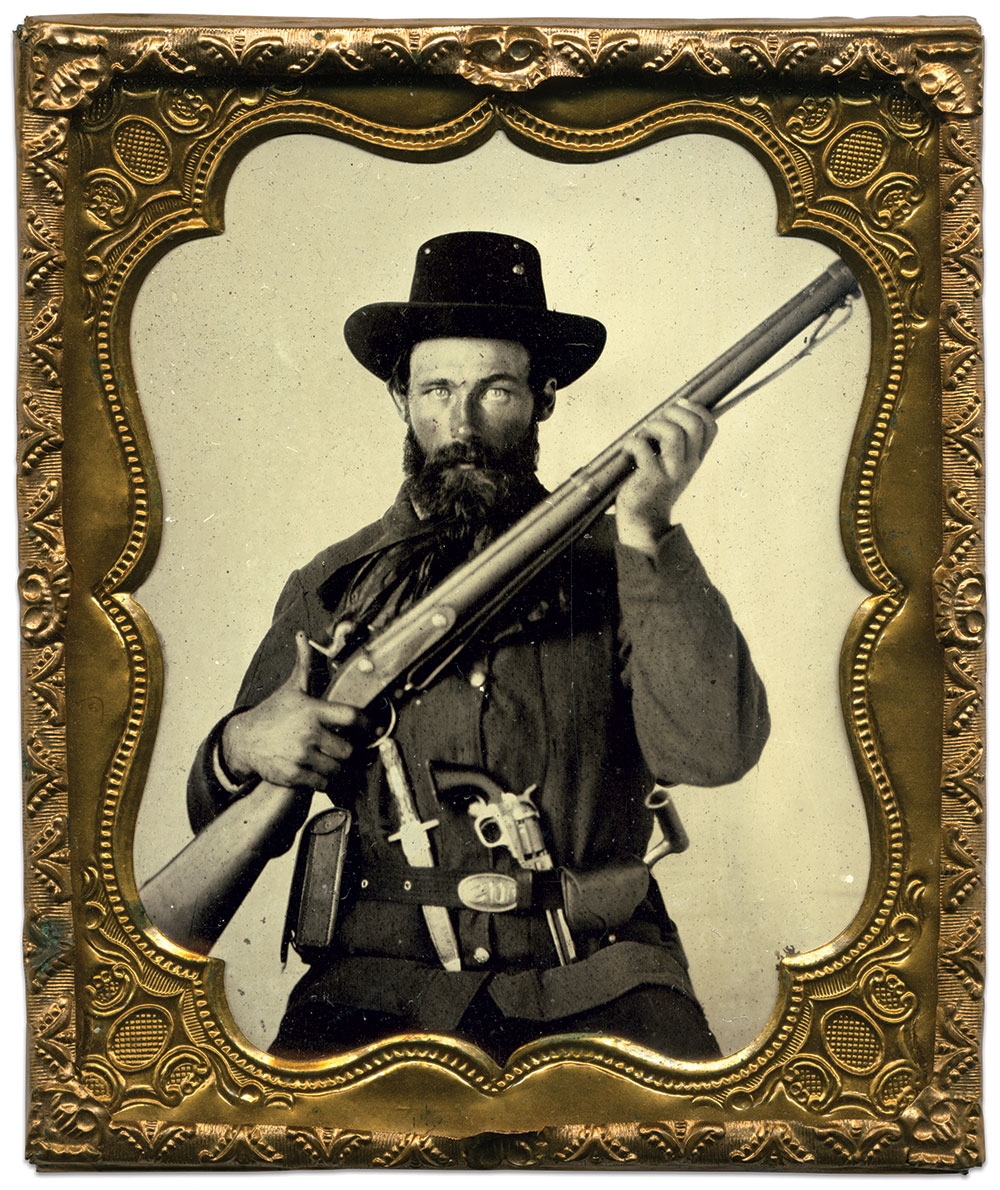
A federal rests his thumb on the hammer of his musket as he stares intently past the camera. A knife and revolver stuck in his unusual textured belt—note the metal grommets—add a measure of toughness to his appearance. The belt plate, the small oval pattern 1839, is uncommon. The contrast between his dark uniform and the light background creates a three-dimensional quality.

In one of Sgt. Matthias Roseberry’s last letters home, he seemed assured that the war was almost over. “We never hear any thing a bout the Rebels anymore. I guess they are all played out down here.” The veteran of the hard-fighting 21st Missouri Infantry may not have lacked for confidence after three years of largely successful fighting against Confederate forces in the deep south. Despite his prognostications, the rebels persisted. He died during a charge at Fort Blakely, Ala., in 1864.

Three of the nearly 90,000 Texans who fought with the Confederacy during the Civil War are pictured in this tintype discovered in the northeast part of the state. The fully-equipped rebel in the foreground stands at attention while his two pards rest on the floor behind him, leaning on weapons. Their arms and equipment illustrate typical Southern wartime resources: locally made grey jacket and trousers (likely produced at the Lone Star Mill in Huntsville, Texas), and pre-war weapons and leather goods confiscated from in-state federal arsenals. The five-pointed stars affixed to their caps are hallmarks of the Texas volunteer.
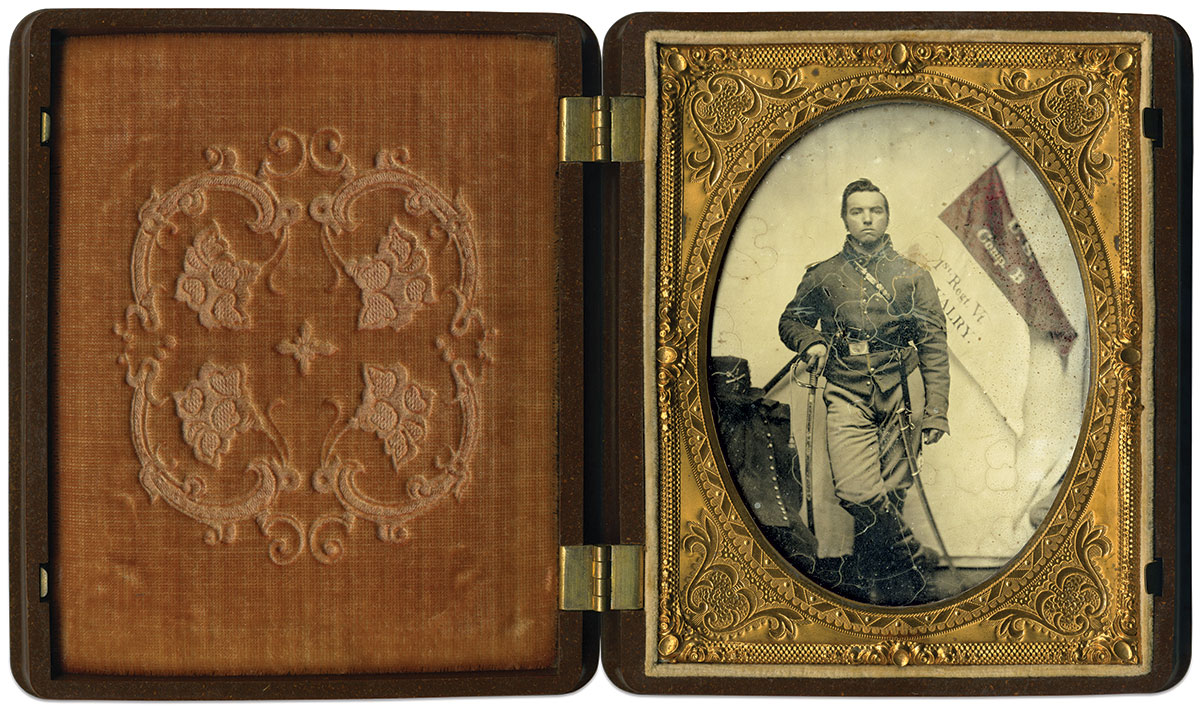
This corporal, according to the red and white guidon that rests behind him, rode with Company B of the 1st Vermont Cavalry. While the photographer’s name is not yet known, identified examples where this swallowtail flag appears as a backdrop were taken in St. Albans, near the Canadian border. Almost half of the corporals of Company B suffered wounds or death at the Battle of Gettysburg, when they followed the doomed Brig. Gen. Elon J. Farnsworth on his ill-fated July 3rd charge near the base of Big Round Top.
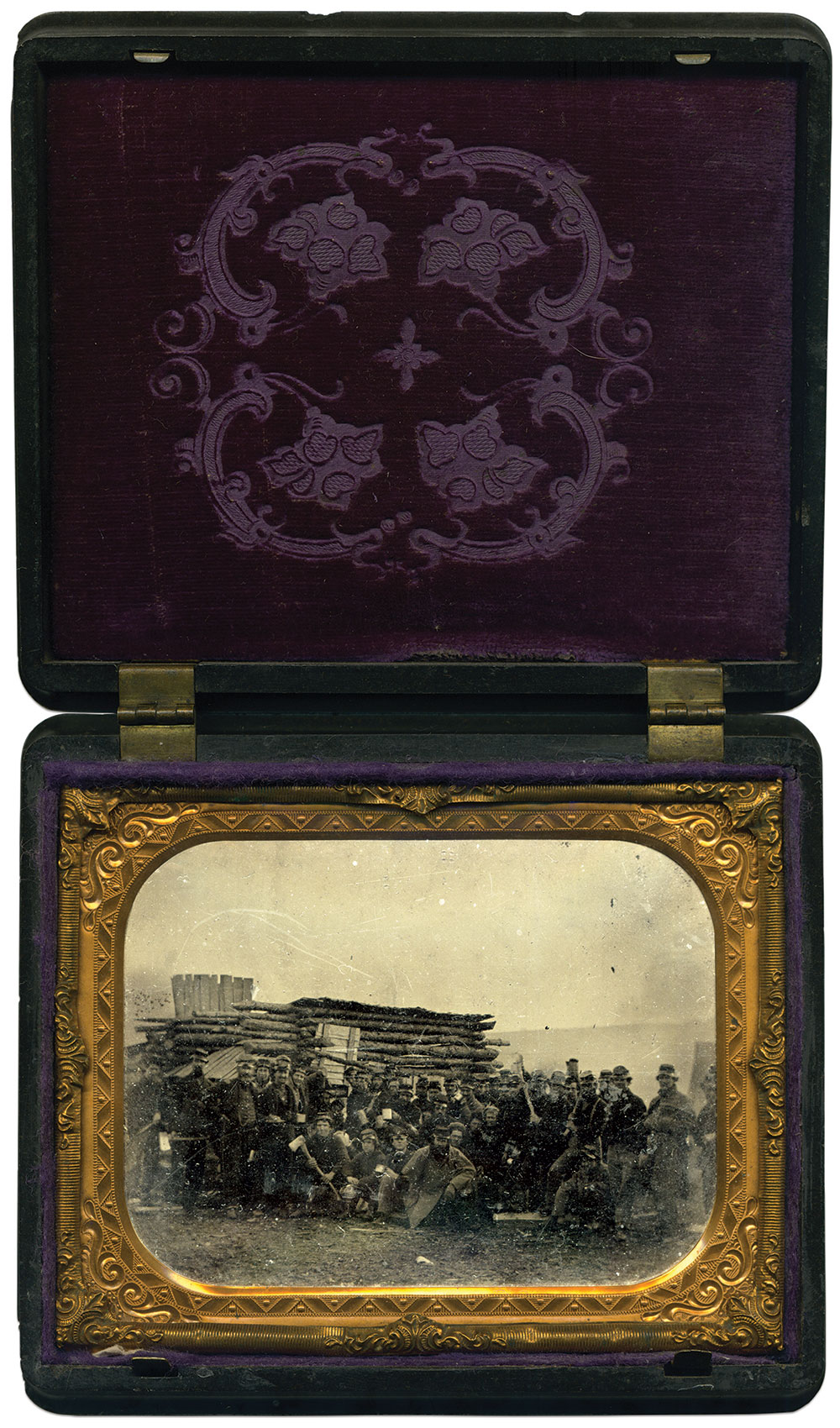
The men in this tintype, believed associated with a Pennsylvania infantry regiment, likely had a hand in building the crude log structure behind them. The mood is almost triumphant with the raised axes, coffee pots and tin cups. Some of the men even seem to smile.

A Virginian brandishes a revolver across his chest and a scarcely-seen first model cavalry sword fashioned by the Virginia Manufactory of Arms. This sword, produced from 1804-1806, featured a 40-inch curved blade and half-basket guard reminiscent of cavalry swords forged for the American Revolution. Originally thought to be impractical, these swords mostly sat in storage in Richmond, until the outbreak of war necessitated the use of all available arms. Virginia Manufactory swords were generally distributed to Virginia’s first cavalry regiments. His fine grey frock coat features buttons bearing the Virginia state seal.
SPREAD THE WORD: We encourage you to share this story on social media and elsewhere to educate and raise awareness. If you wish to use any image on this page for another purpose, please request permission.
LEARN MORE about Military Images, America’s only magazine dedicated to showcasing, interpreting and preserving Civil War portrait photography.
VISIT OUR STORE to subscribe, renew a subscription, and more.

